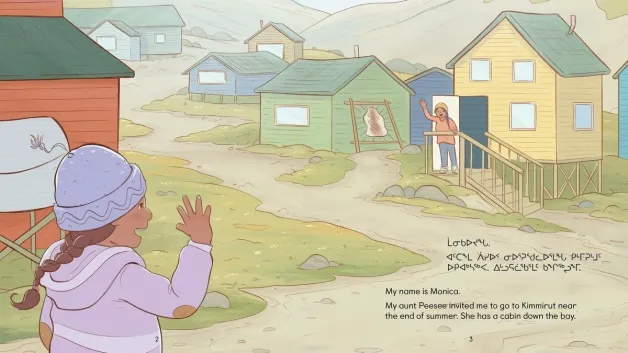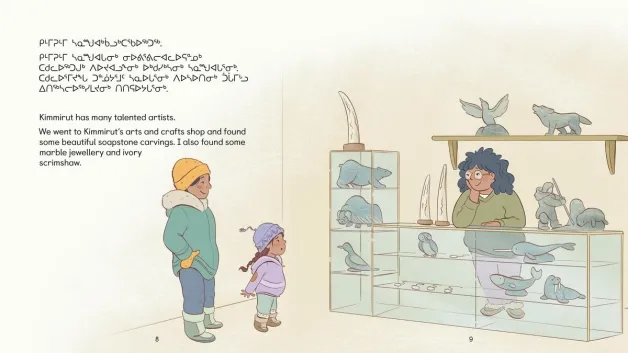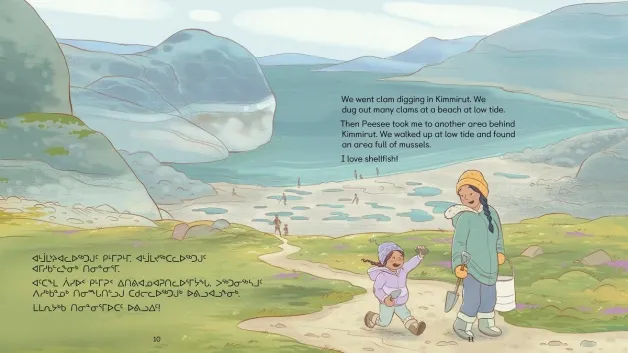My Visit to Kimmirut
Synopsis:
Preview Images (3)


What will Monica see and learn when she visits a new community?
Monica is visiting her aunt Peesee in Kimmirut, Nunavut. There are many wonderful things to see and do there. Monica is excited to explore and learn about her aunt's community. Join Monica and Peesee as they go clam digging, visit waterfalls, and see the tallest trees on Baffin Island in this bilingual picture book!
Reviews
"In the story, Monica shares about visiting her aunt in Kimmirut. At the beginning of the story, she explains that the village was renamed with its traditional name (Kimmirut) from its settler name (Lake Harbour). Different cultural elements are explored: resources, arts, food, activities, and land features. As well, there is an exploration of the seasons through images, contrasting the end of summer and winter. Teachers can point out to the students that with the exception of two pages, there are no trees on the landscape. This would be a good introduction to biomes and an inquiry into the arctic tundra. While the book is written for younger students, older students could benefit from the story and extend their learning by engaging in an inquiry project about the traditional Inuktitut names that are increasingly used in Nunavut in an effort to decolonize place names. For instance, Baffin Island’s traditional Inuktitut name is Qikiqtaaluk." - Alethea S., Indigenous Books for Schools
Educator & Series Information
Recommended for ages 3 to 5.
Dual-language: English and Inuktitut
This book is part of the Community Connections series.
This title is included in the Indigenous Books for Schools database from the Association of Book Publishers of BC, recommended for K-5 English Language Arts and Social Studies.
Additional Information
23 pages | 8.00" x 9.00" | Paperback

 Go
Back
Go
Back





